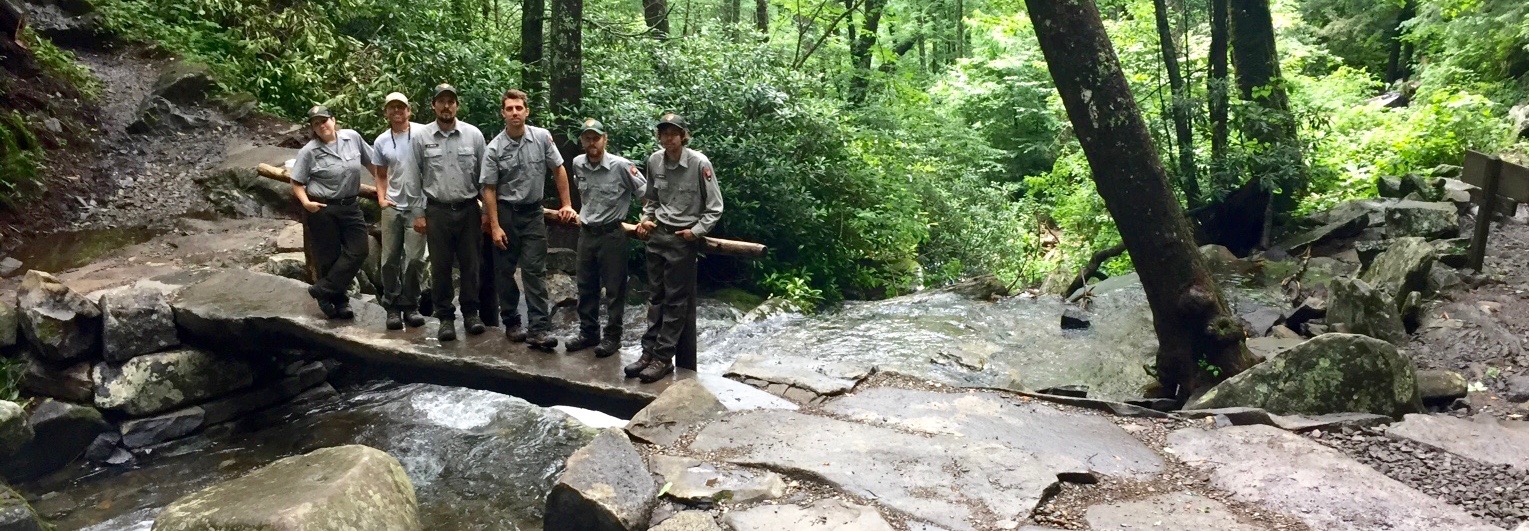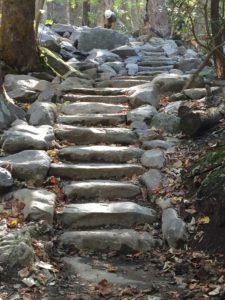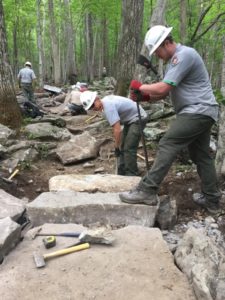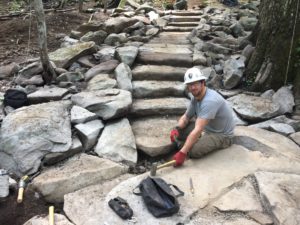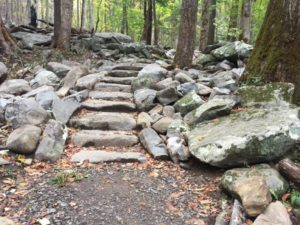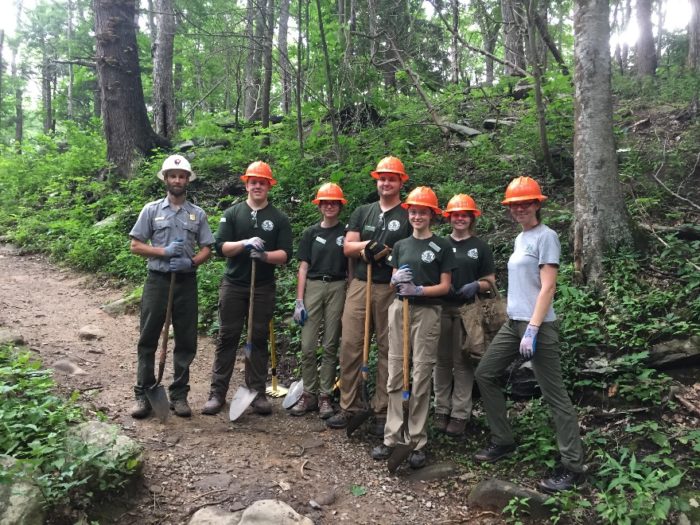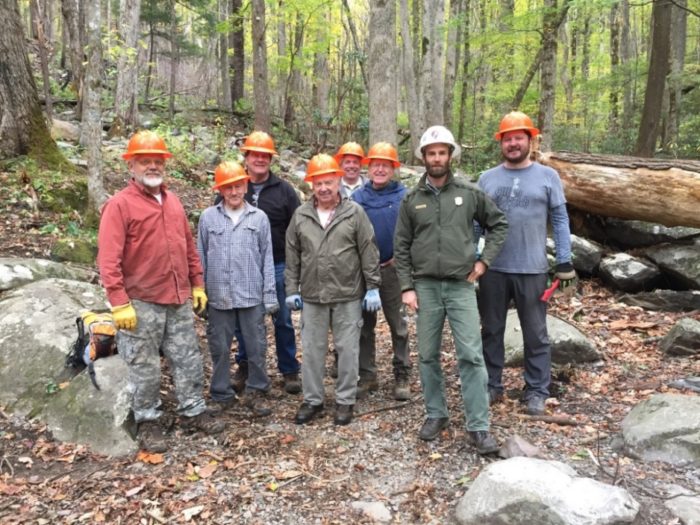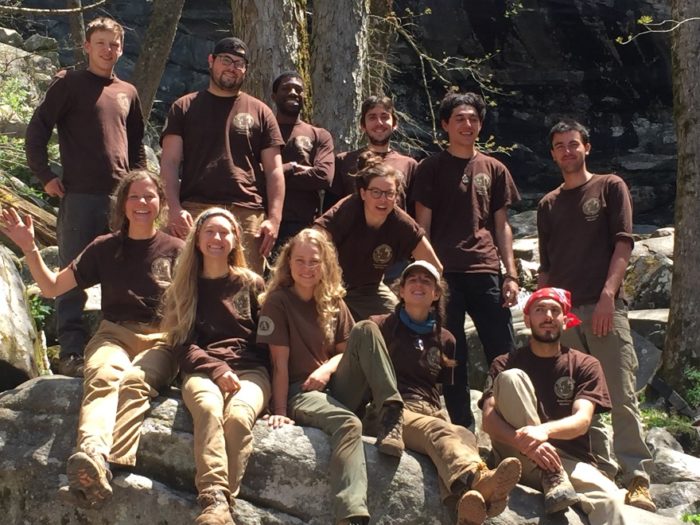by Julie Dodd
The Rainbow Falls Trail restoration is another success story for the Friends of the Smokies Trails Forever program. The completion of the restoration project was celebrated with a ribbon-cutting ceremony in November 2018.
The Trails Forever crew has restored four popular trails in the Great Smoky Mountains National Park — Forney Ridge, Chimney Tops, Alum Cave and Rainbow Falls.
Materials and personnel needed
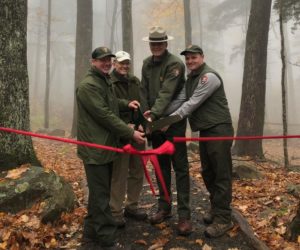
Restoring the six-mile Rainbow Falls Trail took two years and included many impressive statistics:
- 2 stone bridges installed (weighing a total of 13,500 pounds) – both located at Rainbow Falls
- 44 American Conservation Experience (ACE) youth interns providing 41,360 hours of service
- 75 dry stone pavers (15,000 pounds), some are seen in the photo of the stone bridge at the top of this blog post
- 157 locust steps installed
- 162 volunteers contributed 1,576 hours of service
- 197 stone steps installed
- 400 drainage elements installed
- 1,100 side rocks (250,000 pounds) placed along the trail
- 35,000 cubic feet (6.3 million pounds) of stone crushed for fill on the trail
Josh Shapiro was the Trails Forever Crew Supervisor for the Rainbow Falls Trail restoration. He worked with the crew to survey the trail to determine the trail work needed, ordered materials, planned the work of the crew, and coordinated the efforts of the volunteers.
I asked Shapiro about the project.
FOTS: How were the materials transported for the Rainbow Falls Trail work?
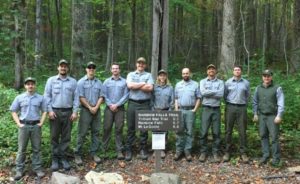
Josh Shapiro: The NPS Trails Packing Program utilized a mule string that transported tools, supplies, and locust logs from the parking area to different staging points up to Rainbow Falls.
The work crews (NPS, ACE, and Volunteers) transported tools, supplies and locust logs on a daily basis to each individual work site from the staging areas.
Gear and locust logs were flown to the top of Mt. Le Conte by helicopter for work improvements on the upper sections of the trail.
Installing stone bridges, eliminating social trails
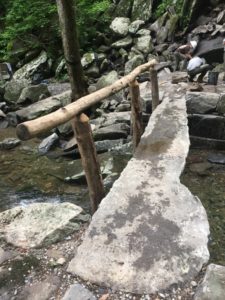
FOTS: Why were stone bridges used at Rainbow Falls?
Josh Shapiro: We prefer to use stone for building trail structures whenever possible. Stone is the most sustainable material that we have, and it blends in with the natural landscape. For the stone work, we utilize local stone that is in the immediate area.
FOTS: You’ve now worked on four trail restoration projects — Forney Ridge, Chimney Tops, Alum Cave and Rainbow Falls. Was there anything especially challenging about working on the Rainbow Falls Trail?
Josh Shapiro: Rainbow Falls had a large network of social trails (unofficial trails) used as short cuts – a total of more than a mile of short cuts. ACE Crews, Volunteer Crews, and NPS Crews spent a lot of effort covering up those social trails and improving the official trail corridor.
Social trails are a problem because they damage park resources, create hiker confusion, lead to injuries, and create erosion. Our goal with trail restoration is to have one well-defined trail.
Volunteers play vital role
FOTS: What is the importance of having volunteers working on the trail with the Trails Forever crew?
Josh Shapiro: Volunteers serve a vital role in assisting the NPS Crew on Trails Forever Projects. During the two years of the Rainbow Falls Trail Rehabilitation, we had 162 volunteers donate 1,576 hours of work!
Work tasks that volunteers accomplish include covering up social trails, trail surface repair (rock/root removal, digging new trail drainages, berm removal), installing trail signs, assisting NPS Crews with the construction of trail structures, crushing rock to use as fill, filling trail structures with rock crush and soil, and transplanting native vegetation to cover impacted areas. We are very fortunate to have had such hard working and enthusiastic volunteers.
*****

In 2019, the Trails Forever crew will begin a 2-year rehabilitation project of the popular Trillium Gap Trail among other critical trail work across the park on trails, such as the Deep Creek Trail, Rough Fork Trail, Smokemont Trail and Noah Bud Ogle Trail.
Friends of the Smokies established the Trails Forever endowment in 2012, thanks to a matching gift from the Aslan Foundation in Knoxville.
Today, the endowment has grown to more than $6 million and funds a full-time trail crew in Great Smoky Mountains National Park to reconstruct and rehabilitate some of the park’s most impacted trails.
Learn more about contributing to the Trails Forever endowment.
